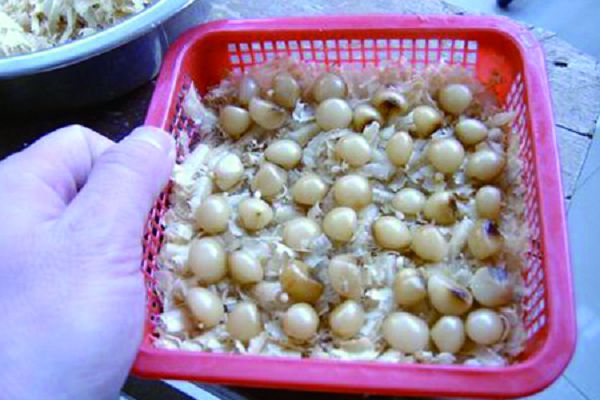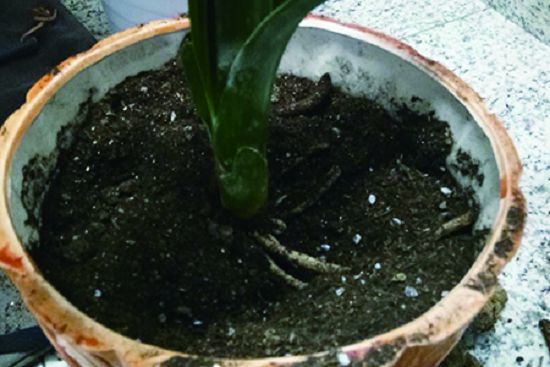What if the orchid doesn't blossom? The treatment method of non-flowering of Magnolia
Magnolia is a kind of plant that can blossom all the year round, but the main florescence is concentrated between spring and summer. Many flower lovers like to raise magnolia because it is green and beautiful when it blossoms. Gentleman orchids can not only watch, but also beautify the environment.
Many of our novice flower friends grow green orchids very beautiful, but when the flowering time comes, they do not bloom for a long time, or bloom very little, which is why? Today, Hua'ergu will introduce to you the tips for raising orchids. Through these breeding techniques, it is difficult for our orchids not to blossom. Let's learn them together.
The flowering of Cymbidium needs to meet two conditions: the first is to meet the four-year-old seedlings, more than four years of Cymbidium can meet the minimum requirements for flowering; the second is that more than 14 leaves can reach the standard of flowering. These are summed up by flower friends when they raise Cymbidium every day. If any of these conditions are not met, gentleman orchids generally do not blossom.
So our gentleman orchid has met this requirement, but still does not blossom this is why? We're going to analyze it further.
1. Lighting
Lack of light will lead to its non-flowering, magnolia needs to blossom for a certain amount of time, so we should let it accept sunshine as much as possible in spring and summer, semi-shade maintenance in summer, indoor cultivation of orchids need to be raised in places with sufficient scattered light. When the sun is insufficient in winter, we'd better put it on a well-lit balcony to avoid keeping it indoors for a long time to promote photosynthesis and flower bud differentiation.
2. Temperature
The gentleman orchid is a kind of plant that is afraid of cold, and the low temperature will lead to the problem of freezing injury, so it needs to be protected against cold and warm in winter and early spring, and the conditions allow it to be maintained on the south closed balcony with sufficient indoor light. in this way, it can prevent it from being attacked by the cold wind and increase the probability of blooming in the coming year.
3. Nutrients
Nutrients are very important for plant growth, lack of nutrients will cause orchids unable to synthesize the growth elements needed for flowering, so orchids can not blossom naturally, so we need to add some fertile soil before flowering. At the same time, we need to add some organic fertilizer or phosphate and potassium fertilizer to help it produce flower buds, so that the buds will keep popping out at the flowering stage.
Phosphorus and potassium fertilizer can be applied in late winter, Magnolia begins to grow rapidly in early spring, and we can also use nitrogen, phosphorus and potassium together to reduce fertilization when flower buds grow.
4. Change the basin
The gentleman orchid needs to change the basin and soil once a year to avoid excessive consumption of nutrients in the basin soil caused by excessive root whiskers and affect the absorption of flowering nutrients, so we should change a fertile soil and trim off some rotten roots when changing the pot. this will be more conducive to its growth.
5. Watering
Orchids need to grow in a slightly humid environment, we must not overwater or do not water for a long time, otherwise it will not blossom, and sometimes the situation may be even worse. when overwatered, the roots of orchids must be black rot, resulting in plant death! Therefore, we would rather water according to the principle of dry and wet, rather than overwatering.
Related
- Is the orchid suitable for indoor use? Is it good for the body?
- How to prevent the empty root of orchids?
- What to do after the crab claw orchid is withered?
- Why are the leaves of orchids always yellow? Fertilizing and watering.
- Can the root of the gentleman orchid be saved if it is rotten?
- Diagnosis and treatment of cotton-blowing beetle insects in Cymbidium
- There is a way for a gentleman's orchid to rot.
- What is the most suitable temperature and humidity for the orchid?
- How to raise a gentleman's orchid? Cultivation techniques of Cymbidium
- How to prepare the nutritive soil for the cultivation of Cymbidium



